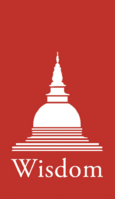A Direct Path to the Buddha Within
No edit summary |
No edit summary |
||
| Line 10: | Line 10: | ||
|BookEssay=[https://www.wisdompubs.org/book/direct-path-buddha-within/introduction Read the introduction and other excerpts online at Wisdompubs.org] | |BookEssay=[https://www.wisdompubs.org/book/direct-path-buddha-within/introduction Read the introduction and other excerpts online at Wisdompubs.org] | ||
''A Direct Path to the Buddha Within'' is one of a handful of recent densely-presented studies of Tibetan attempts to grapple with the ''Uttaratantra'' and tathāgatagarbha theory. [[Klaus-Dieter Mathes]] takes as his focus [[Go Lotsāwa Zhonnu Pel]]'s commentary on the sūtra, the translation of which makes up 165 pages out of the 421 of the book (excluding back matter). Preceding the translation are three introductory chapters on the intellectual context of [[Go]]'s work. The translation is followed by three chapters that individually address Mathes' three questions: what are "subtle" buddha qualities, how is buddha-nature related to prājñaparamitā, and how does [[Go Lotsāwa]] read Mahāmudrā into the | ''A Direct Path to the Buddha Within'' is one of a handful of recent densely-presented studies of Tibetan attempts to grapple with the ''Uttaratantra'' and tathāgatagarbha theory. [[Klaus-Dieter Mathes]] takes as his focus [[Go Lotsāwa Zhonnu Pel]]'s commentary on the sūtra, the translation of which makes up 165 pages out of the 421 of the book (excluding back matter). Preceding the translation are three introductory chapters on the intellectual context of [[Go]]'s work. The translation is followed by three chapters that individually address Mathes' three questions: what are "subtle" buddha qualities, how is buddha-nature related to prājñaparamitā, and how does [[Go Lotsāwa]] read Mahāmudrā into the ''Uttaratantra'' and other Yogacāra works? The book assumes a high level of understanding of the issues and is meticulous in its detail and documentation; the footnotes have footnotes. | ||
Mathes argues that Go's intention with his commentary was to provide a sūtra basis for Mahāmudrā, the otherwise tantric teaching of the Kagyu tradition. There is some irony in this, as Mathes somewhat blithely dismisses what he claims was [[Longchenpa]]'s attempt to use the same material to find an Indian basis for Dzokchen, an otherwise tantric teaching of the Nyingma tradition. Both great masters did indeed seem hard-pressed to justify the central teaching of their tradition against criticism of Prājñaparamitā-based Madhyamaka adherents in the Sakya and Kadam/Geluk traditions. These criticisms generally centered on the issue of whether the ultimate could correctly be described as possessing qualities of its own or whether emptiness was, in fact, a radical denial of all propositions. Sakya, Kadam, and Geluk writers argued either that the | Mathes argues that Go's intention with his commentary was to provide a sūtra basis for Mahāmudrā, the otherwise tantric teaching of the Kagyu tradition. There is some irony in this, as Mathes somewhat blithely dismisses what he claims was [[Longchenpa]]'s attempt to use the same material to find an Indian basis for Dzokchen, an otherwise tantric teaching of the Nyingma tradition. Both great masters did indeed seem hard-pressed to justify the central teaching of their tradition against criticism of Prājñaparamitā-based Madhyamaka adherents in the Sakya and Kadam/Geluk traditions. These criticisms generally centered on the issue of whether the ultimate could correctly be described as possessing qualities of its own or whether emptiness was, in fact, a radical denial of all propositions. Sakya, Kadam, and Geluk writers argued either that the ''Uttaratantra'' was provisional—a Yogacāra teaching in need of interpretation—or its teaching on buddha-nature was in line with a Madhyamaka presentation of emptiness, denying the language-positive elements of the scripture. | ||
Go rejected both of these positions, arguing that the | Go rejected both of these positions, arguing that the ''Uttaratantra'' is consistent with other Third-Turning teachings of Yogacāra and that such teachings are definitive. This was a necessary move in order to conflate cataphatic Yogacāra doctrine with Mahāmudrā: buddha-nature for Go is not a synonym for emptiness, but rather for "the unfabricated nature of mind" and "luminosity," core Mahāmudrā doctrine. But Go differentiated his approach from other advocates of a Yogacāra interpretation. He argued against the notion that buddha-nature is fully formed in every sentient being (the "buddha qualities" discussion), advocating instead that buddha-nature is a potential that needs to be developed. We are not like golden statues hidden in mud, but rather like acorns that need water and sunlight to grow into oak trees. | ||
|BookToc=* {{i|Abbreviations|viii}} | |BookToc=* {{i|Abbreviations|viii}} | ||
* {{i|Preface|ix}} | * {{i|Preface|ix}} | ||
Revision as of 16:40, 29 March 2019
Maitreya’s Ratnagotravibhāga, also known as the Uttaratantra, is the main Indian treatise on buddha nature, a concept that is heavily debated in Tibetan Buddhist philosophy. In A Direct Path to the Buddha Within, Klaus-Dieter Mathes looks at a pivotal Tibetan commentary on this text by Gö Lotsāwa Zhönu Pal, best known as the author of the Blue Annals. Gö Lotsāwa, whose teachers spanned the spectrum of Tibetan schools, developed a highly nuanced understanding of buddha nature, tying it in with mainstream Mahāyāna thought while avoiding contested aspects of the so-called empty-of-other (zhentong) approach. In addition to translating key portions of Gö Lotsāwa's commentary, Mathes provides an in-depth historical context, evaluating Gö’s position against those of other Kagyü, Nyingma, and Jonang masters and examining how Gö Lotsāwa’s view affects his understanding of the buddha qualities, the concept of emptiness, and the practice of mahāmudrā. (Source: Wisdom Publications)
| Citation | Mathes, Klaus-Dieter. A Direct Path to the Buddha Within: Gö Lotsāwa's Mahāmudrā Interpretation of the Ratnagotravibhāga. Studies in Indian and Tibetan Buddhism. Boston: Wisdom Publications, 2008. |
|---|---|


